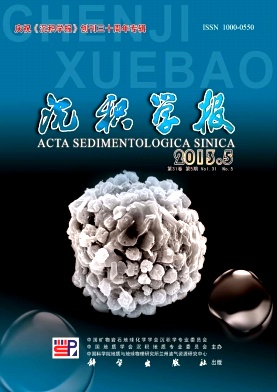Sedimentary Characteristics and Seismic Sedimentologic Responses of Shallow-water Delta of Qingshankou Formation in Qijia Area, Songliao Basin
- Publish Date: 2013-10-10
-
Key words:
- Qijia area of Songliao Basin /
- Cretaceous Qingshankou Formation /
- shallow-water delta /
- sedimentary model /
- seismic sedimentology
Abstract: Under the guide of modern sedimentology and seismic sedimentology, combined with the comprehensive analysis of core data from more than ten wells and geophysical data, Qingshankou Formation is divided into 3 long-term cycles and 6 medium-term cycles in Qijia area, Songliao Basin. The 3 long-term cycles, SQ1, SQ2 and SQ3 correspond to the members,Qing Ⅰ, Qing Ⅱ and Qing Ⅲ, and the time scale of medium-term cycle is about 0.5~1.5 Ma, with thickness ranging from 45 m to 116 m. Shallow-water delta which consists of high-maturity fine-grained sandstone is mainly developed in Qingshankou Formation, and erosion surface reflecting stronge flow action, parallel beddings and long-scale cross beddings are well developed. Distributary channel sandstone is well developed in the shallow-water delta sedimentary system, with single channel thickness about several meters. The accumulative thickness of distributary channels can reach to tens of meters with a large distributing area, extending to the center of lacustrine basin over tens of kilometers. The development of subaqueous distributary channel of shallow-water delta is closely related to the base level (lake level) change. In the early stage of rising semi-cycle and the late stage of falling semi-cycle, the fluviation is significant and the channel sandstone which can extend towards the center of lacustrine basin more than 50 kilometers is well developed, with large accumulative thickness of compound sandbody (17~28 m) and high sandstone to strata ration (78%~88%). In the late stage of rising semi-cycle and the early stage of falling semi-cycle, the lake level rises and the fluviation becomes weak, resulting in the extending distance of distributary channel less than 30 kilometers with small accumulative thickness of compound sandbody (5~12 m) and low sandstone to strata ration (22%~45%). Delta front can be divided into inner front and outer front. The subaqueous distributary channel in inner front has good continuity and extends further, whereas the subaqueous distributary channel in outer front has poor continuity and sheet sand is well developed. Two typical sedimetanry models of shallow-water delta, delat plain well developed in humid climate and detla front well developed in arid climate, are established in Qijia area, Songliao Basin. Stratal slices from seismic sedimentology are applied to display the branchlike sandstone dispersal pattern of shallow-water delta and the characteristics of widely distribution. This study also points out that the detla front channel sandstone which is near to oil source and faults would be the favorable exploration targets.
| Citation: | Sedimentary Characteristics and Seismic Sedimentologic Responses of Shallow-water Delta of Qingshankou Formation in Qijia Area, Songliao Basin[J]. Acta Sedimentologica Sinica, 2013, 31(05): 889-897. |






 DownLoad:
DownLoad: